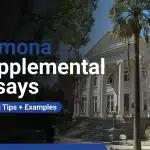When it comes to Johns Hopkins vs Columbia, you are looking at two of the most prestigious universities in the world, each with its own unique strengths. Columbia is an Ivy League school, while Johns Hopkins—though not Ivy—matches it in academic prestige and global reputation. Deciding between them means understanding how they differ in academics, campus life, costs, and opportunities.
In this blog, you will get a clear breakdown of acceptance rates, rankings, academic style, student life, and financial aid for both schools. This guide will walk you through the details, so you can picture yourself on each campus and decide which one feels right for you.
- Johns Hopkins vs Columbia: Acceptance Rates
- Johns Hopkins vs Columbia: Rankings
- Johns Hopkins vs Columbia: Academics
- Johns Hopkins vs Columbia: Campus Life
- Johns Hopkins vs Columbia: Cost of Attendance
- Johns Hopkins vs Columbia: Financial Aid and Scholarships
- Final Verdict
- Frequently Asked Questions
- Takeaways
Johns Hopkins vs Columbia: Acceptance Rates
One of the first factors you probably want to check when comparing Johns Hopkins and Columbia is how hard it is to get in. While acceptance rates do not tell the entire story, they give you a clear idea of how competitive your application needs to be.
Here are the admissions numbers for the Class of 2028:
| School | Total Applications | Total Accepted | Acceptance Rate |
| Johns Hopkins | 45,134 | 2,558 | 5.7% |
| Columbia | 60,248 | 2,319 | 3.85% |
As you can see, Columbia is more selective than Johns Hopkins. For the Class of 2028, Columbia received 60,248 applications and accepted 2,319 students, putting its acceptance rate at 3.85%. Johns Hopkins had 45,134 applicants and accepted 2,558 students, with an acceptance rate of 5.7%.
Here is how acceptance rates have trended over the past three years:
- Johns Hopkins’ acceptance rate was 7.3% for the Class of 2026, 7.6% for the Class of 2027, and 5.7% for the Class of 2028. The drop in 2028 shows how much more competitive the school has become as application numbers have risen.
- Columbia’s acceptance rate was 3.7% for the Class of 2026, held steady at 3.85% for the Class of 2027, and stayed at 3.85% for the Class of 2028. The numbers show that competition at Columbia remains extremely intense year after year.
The bottom line is that Columbia is more selective based on acceptance rates, but both schools require you to have exceptional academic performance, strong extracurricular involvement, and a compelling application to stand out.
Johns Hopkins vs Columbia: Rankings
While rankings should not be the only reason you choose a college, they can help you compare two schools with different strengths and campus environments. Rankings give you a general sense of each school’s academic reputation, teaching quality, and how they are viewed by employers and other universities.
Here is how Johns Hopkins and Columbia compare across three major ranking systems:
| Ranking Source | Johns Hopkins | Columbia |
| U.S. News (National) | #6 | #13 |
| Times Higher Ed (World) | #16 | #18 |
| QS World University Rankings | #24 | #38 |
U.S. News (National Rankings)
- Johns Hopkins: #6
- Columbia: #13
Johns Hopkins ranks higher than Columbia in the U.S. News national rankings. This suggests that Johns Hopkins performs better in areas such as faculty resources, student outcomes, and peer assessment scores. Columbia remains in the top 15, which still reflects a strong national reputation, but Johns Hopkins currently has the advantage in this ranking.
Takeaway: If you want a school that is consistently ranked among the top ten in the country, Johns Hopkins has a stronger position here.
Times Higher Education (World University Rankings)
- Johns Hopkins: #16
- Columbia: #18
Both schools place within the top 20 worldwide, which shows that they have global recognition for their research, teaching, and international outlook. Johns Hopkins holds a slight edge, which may be influenced by its strong research output, particularly in medicine and public health.
Takeaway: You can expect both schools to be recognized globally, but Johns Hopkins is just a step ahead in this ranking.
QS World University Rankings
- Johns Hopkins: #24
- Columbia: #38
Johns Hopkins ranks higher in the QS rankings, which measure academic reputation, employer perception, and research impact. Columbia still has a solid position, but Johns Hopkins’ higher ranking could be appealing if you are considering careers or graduate study with an emphasis on global recognition.
Takeaway: If having a degree with strong international prestige matters to you, Johns Hopkins leads in this category.
Johns Hopkins vs Columbia: Academics
Johns Hopkins and Columbia both deliver an outstanding academic experience, but the way you will learn at each school is different. When you are thinking about which one might be a better fit, consider how much structure you want, how you prefer to explore new subjects, and which learning environment will push you to grow.
Johns Hopkins academics
The academic experience at Johns Hopkins is built around flexibility and hands-on learning. There is no core curriculum, which means you can design your education to match your unique interests. You can explore multiple subjects before choosing a major and even double major in two very different fields.
Some of the top programs at Johns Hopkins include:
- Biomedical engineering
- Public health
- International studies
- Neuroscience
- Writing
The student-to-faculty ratio at Johns Hopkins is 6:1, which gives you many chances to build strong relationships with professors. You can expect more personalized feedback on your work and greater access to research opportunities.
Columbia academics
Columbia’s Core Curriculum has shaped its academic program for over 100 years. Every student completes courses in literature, philosophy, history, science, art, music, and writing, creating a shared intellectual foundation.
Some of Columbia’s strongest programs include:
- Literature and writing
- Journalism
- Economics and business
- Political science
- Physics
Columbia also has a student-to-faculty ratio of 6:1, giving you similar access to professors as you would have at Johns Hopkins. You will have the chance to work closely with faculty both inside and outside the classroom.
Still unsure whether Johns Hopkins or Columbia offers the academic experience that suits you best? Our Academic and Extracurricular Profile Evaluation & Roadmap will give you a clear plan for excelling in both academics and extracurriculars, so you can build a competitive college application.
Johns Hopkins vs Columbia: Campus Life
Campus life is about the people you meet, how you spend your free time, and the memories you carry long after graduation all shape your experience. Whether you picture yourself in a quiet, green campus community or a vibrant city hub, Johns Hopkins and Columbia offer very different environments.
Johns Hopkins campus life
Life at Johns Hopkins centers on the Homewood campus, where all first- and second-year students live in university housing. Housing options range from traditional residence halls to suite-style rooms and gender-inclusive housing. This setup fosters strong bonds among classmates through shared activities and campus events.
Here is what to expect at Johns Hopkins:
- Residence halls have Resident Advisors who organize events and offer personal support. This helps students transition smoothly into college life.
- Seven dining locations serve diverse menus designed by professional chefs. They cater to various dietary needs and preferences.
- More than 430 student-run organizations and 24 varsity sports teams are available. Students can explore academic, cultural, and recreational interests.
- Over 50 community service groups give back to Baltimore. Around 83% of students participate in at least one organization.
Columbia campus life
Campus life at Columbia blends a walkable campus environment with the energy of New York City. Students live in one of 35 residence halls near academic buildings, dining areas, and cultural attractions. Located in Morningside Heights, the campus offers both a close community and easy access to the city.
Here is what to expect at Columbia:
- Over 500 student clubs and organizations are open to undergraduates. Columbia College and Columbia Engineering students share these opportunities.
- The surrounding neighborhood features more than 50 restaurants, cafes, and coffee shops. Many are just steps from campus.
- Columbia offers Division I NCAA athletics alongside intramural and club sports. This allows students of all skill levels to get involved.
- Wellness programs like Live Well | Learn Well promote student health. They provide resources for mental, physical, and emotional well-being.
Johns Hopkins vs Columbia: Cost of Attendance
When comparing top schools like Johns Hopkins and Columbia, the price tag can feel like a significant factor. Both are private universities, which means they come with high costs, but how those costs are divided up is a little different. Knowing the breakdown can help you see where your money would actually go.
Here is what one year at each school might cost you:
| School | Total Cost of Attendance |
| Johns Hopkins | $88,976 |
| Columbia | $93,417 |
Let’s take a closer look at Johns Hopkins’ costs ($88,976 total):
- $64,730 for tuition
- $500 for a one-time matriculation fee
- $11,968 for housing
- $8,182 for meals
- $1,514 for personal expenses
- $1,356 for books and supplies
- $726 for average transportation
Now here is how Columbia’s total of $93,417 adds up:
- $71,170 for tuition and fees
- $675 in new student fees
- $17,580 for housing and food
- $3,992 for books
Columbia’s total cost is about $4,441 higher than Johns Hopkins, mainly because of higher housing and food costs. Over four years, that adds up to about $17,764 more if you attend Columbia instead of Johns Hopkins.
Johns Hopkins vs Columbia: Financial Aid and Scholarships
If you are comparing Johns Hopkins and Columbia, knowing how each school handles financial aid can help you figure out which one is a better financial fit for you. Both meet 100% of demonstrated need, but the way they structure aid and the extra benefits they include can make a difference in your overall experience.
Johns Hopkins financial aid and scholarships
Johns Hopkins meets your full demonstrated financial need, which means you could get a package that covers tuition, housing, meals, and more if you qualify. More than half of students receive need-based financial aid, and the average need-based scholarship is around $66,000 per year. About 80% of students graduate debt-free, so you can focus on your education without a heavy loan burden.
Here’s what financial aid looks like at Johns Hopkins:
- Johns Hopkins scholarships are awarded based on need from your financial aid application, and they never need to be repaid. This can significantly reduce your out-of-pocket costs.
- Student employment is often part of your aid package, giving you the chance to work on- or off-campus to cover personal expenses while gaining experience.
- Flexible payment plans help your family spread out costs over time, and tuition benefits are available for qualified military families.
- Loans are not expected as part of your aid package, though they are available if you choose to borrow.
Columbia financial aid and scholarships
Columbia is need-blind for U.S. first-year applicants and meets 100% of your demonstrated need for all four years. About 51% of first-year students receive financial aid, with the average grant and scholarship package totalling $76,265. Families earning less than $150,000 with typical assets qualify for free tuition, and those earning less than $66,000 pay nothing toward the cost of attendance.
Here’s what you can expect at Columbia:
- Columbia awards over $200 million in scholarships and grants each year, with no loans included in your initial financial aid award. This means you can graduate without debt if you choose not to borrow.
- Low-income first-year students receive a $2,000 start-up grant and have their summer earnings requirement waived to help ease the transition to college life.
- Students can also access extra funding for unpaid internships, research, or community service through programs like the Work Exemption Program.
You apply using the FAFSA, CSS Profile, and tax documents, and you reapply each year to keep your aid.
Final Verdict
Johns Hopkins and Columbia are two of the most prestigious universities in the country, but the right choice comes down to who you are and what kind of college experience will help you thrive.
- Choose Johns Hopkins if you want maximum flexibility in shaping your education and enjoy a campus-centered community. You will have the freedom to design your academic path without a core curriculum, explore multiple interests before choosing a major, and take advantage of small class sizes and close relationships with professors. The Homewood campus in Baltimore offers green spaces, a collaborative atmosphere, and a strong tradition of student-led clubs, sports, and service.
- Choose Columbia if you are excited about living in the heart of New York City and want a more structured academic experience through the Core Curriculum. You will study a shared set of courses in literature, philosophy, history, and the arts while also tapping into the resources of a major research university. The Morningside Heights campus blends a close community feel with access to world-class museums, internships, and cultural experiences right outside your door.
In the end, think about whether you learn best in a flexible, self-directed setting or in a guided program with a strong shared foundation. Both Johns Hopkins and Columbia will challenge you and open doors, but one will feel more like the place where you truly belong.
Frequently Asked Questions
1. Which is harder to get into, Johns Hopkins or Columbia?
If you are looking at acceptance rates, Columbia is tougher to get into than Johns Hopkins. Columbia accepts only about 3.85% of applicants, while Johns Hopkins admits around 5.7%, so your chances are slightly better at Hopkins, though both are extremely competitive. You will need top grades, strong extracurriculars, and a standout application no matter which one you apply to.
2. Which is more affordable, Johns Hopkins or Columbia?
When you compare total costs, Johns Hopkins is more affordable than Columbia. Johns Hopkins’ yearly total is about $88,976, while Columbia’s is $93,417, meaning Columbia costs $4,441 more per year or $17,764 more over four years. If you are trying to save money and both schools fit your goals, that price gap might matter to you.
3. Which is better overall, Johns Hopkins or Columbia?
The better choice depends on how you learn and where you want to live. Johns Hopkins offers more flexibility in academics with no core curriculum, while Columbia gives you a structured Core Curriculum and the energy of New York City. Consider whether you prefer a self-directed campus experience in Baltimore or the urban college life in Manhattan before making your decision.
Takeaways
- You will face tougher odds at Columbia with a 3.85% acceptance rate compared to Johns Hopkins’ 5.7%. Still, your application will need to be flawless for either school.
- You would save about $17,764 over four years by choosing Johns Hopkins since Columbia’s higher housing and food costs make it $4,441 more expensive each year.
- You will get more freedom at Johns Hopkins because there is no core curriculum, while Columbia will guide you through a set of required Core Curriculum courses.
- You will experience a quieter, green campus vibe in Baltimore at Johns Hopkins, while Columbia puts you in the middle of New York City with endless cultural and internship opportunities.
- Connect with a college admissions expert who can help you navigate the competitive application process for Columbia and Johns Hopkins, ensuring you highlight your strengths and stand out to admissions committees.

Eric Eng
About the author
Eric Eng, the Founder and CEO of AdmissionSight, graduated with a BA from Princeton University and has one of the highest track records in the industry of placing students into Ivy League schools and top 10 universities. He has been featured on the US News & World Report for his insights on college admissions.












